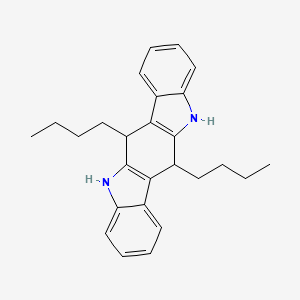|
Name: Marihuana Extract
Type: Cannabis derivative
AKA: N/A

|
|
II. Natural Derivative
Synthetic substance, no natural derivative

|
|
III. Chemical Profile (IUPAC name)

|
|
IV. History
Marihuana Extract, derived from Cannabis sativa, has been used for centuries. It is significant in both historical and contemporary contexts for its medicinal, recreational, and industrial applications.

|
|
V. Legal Information
Marihuana Extract is derived from Cannabis sativa and contains cannabinoids. It is regulated differently across regions, with some allowing medical use while others impose strict controls. Trends show increasing regulation to manage both medical and recreational use. [Source: UNODC].
US Federal Schedule - I
Schedule I drugs, substances, or chemicals are defined as drugs with no currently accepted medical use and a high potential for abuse. Some examples of Schedule I drugs are: heroin, lysergic acid diethylamide (LSD), marijuana (cannabis), 3,4-methylenedioxymethamphetamine (ecstasy), methaqualone, and peyote.
Key US Federal Policies:
Controlled Substances Act. Public Law: Public Law 91-513 (text can be found on GovInfo) (https://www.dea.gov/drug-information/csa). Date enacted: October 27, 1970.
|
|
VI. Physical Effects
Marihuana extract is a concentrated form of cannabis used for various medical and recreational purposes. It acts as an upper, producing euphoria and altered sensory perception. Short-term use can enhance mood and appetite, while long-term use may cause respiratory issues, dependency, and cognitive effects. Overdose risks are generally low but may include severe psychological effects. Safe use involves moderate consumption and awareness of its effects. Recent research examines its medicinal benefits and potential health risks.  |
|
VII. Psychological Effects
Marijuana extract, containing THC and other cannabinoids, produces euphoria, altered perception, and relaxation. Immediate effects include mood elevation, anxiety reduction, and cognitive impairment. Long-term use can lead to dependence, anxiety disorders, and cognitive deficits. Chronic use is associated with depression, anxiety, and potential psychotic episodes. Recent research highlights both therapeutic benefits and risks of cannabis use.
 |
|
VIII. Culture
Marijuana extract has been used historically in various cultures for its psychoactive and medicinal properties. Ancient texts from China, India, and the Middle East document its use in religious and healing practices. In modern culture, it is noted for its role in the legalization movement and medical cannabis. Proponents argue for its benefits in treating various conditions, while opponents raise concerns about its impact on health and society. Its use spans both medicinal and recreational settings, reflecting ongoing debates about cannabis policy.
 |
